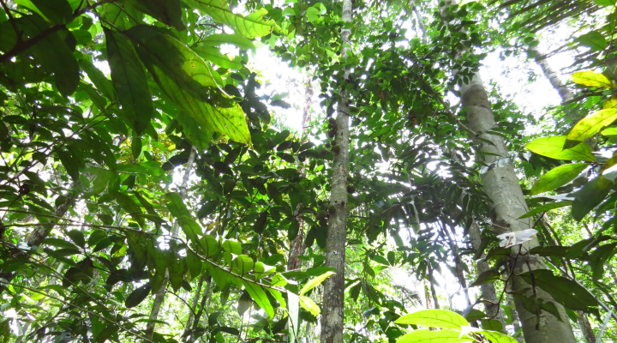Nov 10 2020
The speed at which trees die—and the reason for their death—will ultimately govern the Amazon forest’s capacity to store carbon in a changing climate.

Image Credit: University of Birmingham.
A new extensive study has now disclosed the factors that regulate the mortality rates of trees present in Amazon forests and elucidates why tree mortality is rising throughout the Amazon basin.
This huge analysis discovered that the mean growth rate of the tree species is the important risk factor behind Amazon tree death, with most rapidly growing trees dying off at a younger age.
Such results are highly relevant to gain insights into the future of these forests. Climate change has been found to affect fast-growing species. In case the forests chosen by climate change are more prone to die younger, they will also store less amount of carbon.
The research, jointly headed by the Universities of Leeds and Birmingham together with over 100 researchers, is the first-ever large-scale analysis of the reasons behind tree death in the Amazon and makes use of long-term records collected by the international RAINFOR network.
As reported in the Nature Communications journal, the findings of the study indicate that species-level growth rates are the main risk factor for tree mortality.
Understanding the main drivers of tree death allows us to better predict and plan for future trends—but this is a huge undertaking as there are more than 15,000 different tree species in the Amazon.
Dr Adriane Esquivel-Muelbert, Study Lead Author, Birmingham Institute for Forest Research, University of Birmingham
Dr. David Galbraith from the University of Leeds added, “We found a strong tendency for faster-growing species to die more, meaning they have shorter life spans. While climate change has provided favourable conditions for these species, because they also die more quickly the carbon sequestration service provided by Amazon trees is declining.”
Mortality of trees is a rare occurrence and thus it necessitates huge amounts of data to understand it. The RAINFOR network has gathered over three decades of contributions from over 100 researchers.
It contains records from 189 plots each measuring 1 ha, as well as visited and tracked on average once in three years. During each visit, scientists quantify all trees measuring above 10 cm in diameter together with the condition of each tree.
Over 1,24,000 living trees were tracked in total, and 18,000 tree deaths were recorded and examined. If the trees die, the team follows a fixed protocol to figure out the real cause of death.
This involves detailed, forensic work and amounts to a massive ‘CSI Amazon’ effort conducted by skilled investigators from a dozen nations.
Oliver Phillips, Professor, University of Leeds
According to Dr. Beatriz Marimon, from UNEMAT, who monitors several plots in central Brazil, “Now that we can see more clearly what is going on across the whole forest, there are clear opportunities for action. We find that drought is also driving tree death, but so far only in the South of the Amazon. What is happening here should serve as an early warning system as we need to prevent the same fate overtaking trees elsewhere.”
The study was financially supported by the Natural Environment Research Council and involved contributions from 10 UK universities as well as researchers from across South America in Bolivia, Ecuador, Colombia, Brazil, Guyana, French Guiana, Venezuela, and Peru.
Journal Reference:
Esquivel-Muelbert, A., et al. (2020) Tree mode of death and mortality risk factors across Amazon forests. Nature Communications. doi.org/10.1038/s41467-020-18996-3.